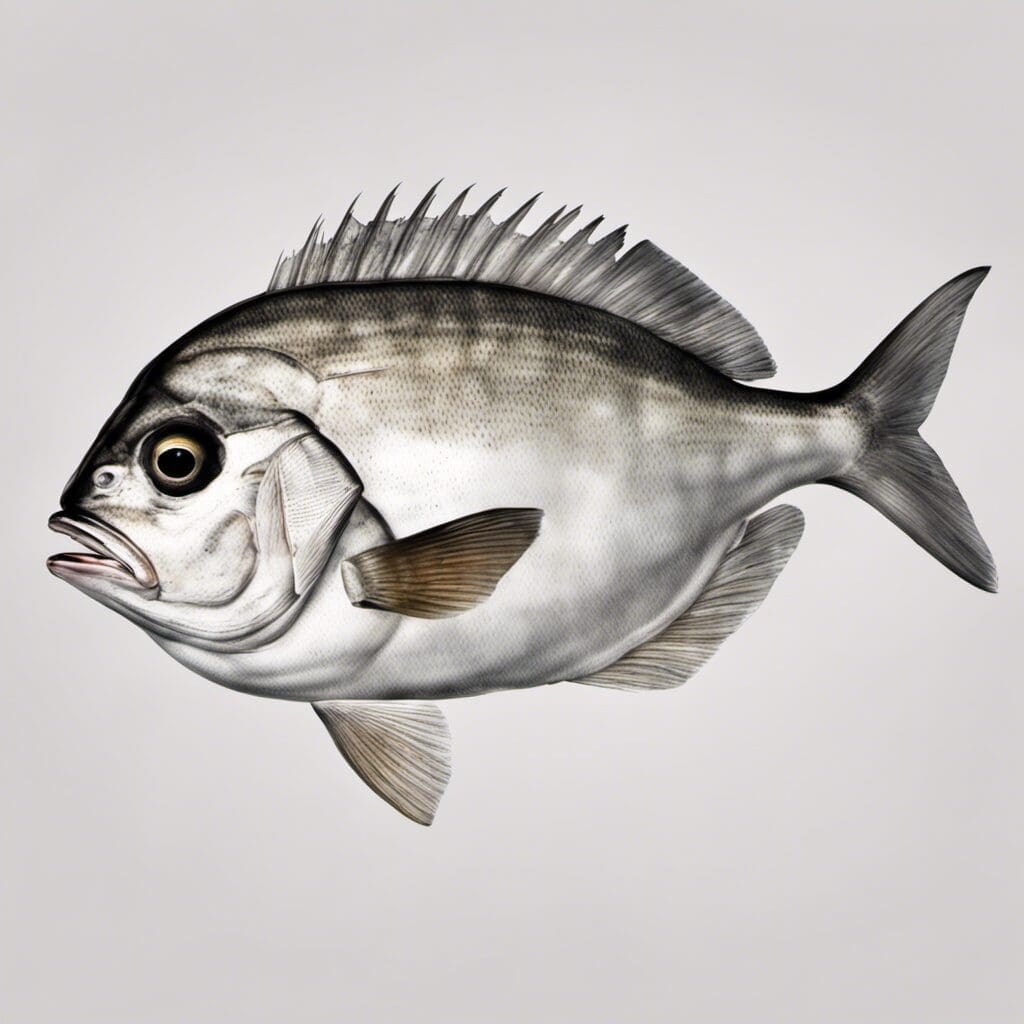Introduction
The Scup (Stenotomus chrysops), also commonly known as Porgy, is a member of the family Sparidae. These fish are native to the Western Atlantic Ocean and are prized for their delicate, sweet flavor.
Conservation Status
The current conservation status of Scup according to The National Marine Fisheries Service (NMFS) is in the “Least Concern” category, which denotes that the species is widespread and abundant. Conservation efforts are in place, with the establishment of size and catch limits in various regions to prevent overfishing.
Statistics
The Scup is a relatively small fish. See the table below for a summary:
| Characteristic | Average | Range |
|---|---|---|
| Length | 30 cm | 18-50 cm |
| Weight | 1 kg | 0.5 - 2 kg |
| Lifespan | 9 years | 5 – 20 years |
Scup have a protruding snout and pointed fins, typical characteristics of the Sparidae family.
Distribution
The Scup can be found along the Eastern Coast of North America, from Maine to South Carolina. There are also some isolated populations found in the Gulf of Mexico. Migration patterns typically include travelling to deeper waters in the colder months and returning to shallower waters in the Spring and Summer.
Habitats
Scup are typically found in saltwater environments and have been known to range from very shallow waters near the shore to depths of up to 200 meters. Temperature ranges are believed to be from 4°C to 24°C, although Scup have been observed most abundantly in waters of around 10°C to 22°C.
When and Where to See
Scup can be seen most frequently during the Spring and Summer months, when they migrate to shallower waters. They are most active during the daytime.
Best Fishing Locations
Some of the top places to catch Scup include:
- Chesapeake Bay, Virginia
- Long Island Sound, New York
- Newport, Rhode Island.
Scup are often found in rocky or sandy bottoms, especially near structures like docks or artificial reefs.
How to Catch
Popular baits for Scup include squid, clams, or cut fish. Fishing techniques can range from bottom fishing to float fishing, with the former seeming to be particularly effective. The best time of day to fish for Scup is during the day, and the best seasons are Spring and Summer.
Identification Guide
Scup can be identified by their silver-blue coloration, with darker shading towards the back and lighter shading underneath. They also have several dark spots along their sides. Their snouts are prominent and their fins are pointy, features characteristic of their Sparidae family.
Culinary Profile
Scup are celebrated for their delicate, sweet flavor and are commonly fried, grilled, or cooked in chowders. Nutritional information is as follows (per 100g of cooked fish):
- Calories: 96
- Protein: 20.3g
- Fats: 1.3g
Recipes featuring Scup can be found on various seafood and culinary websites.
Additional Information
Scup are generally bottom-feeders, consuming a diet primarily composed of worms, small crustaceans and mollusks. Known predators of Scup include larger fish and seabirds. The species has a long history in the commercial fishing industry on the East Coast of the United States.
References and Further Reading
These sites provide additional scientific and conservation information regarding the Scup species

